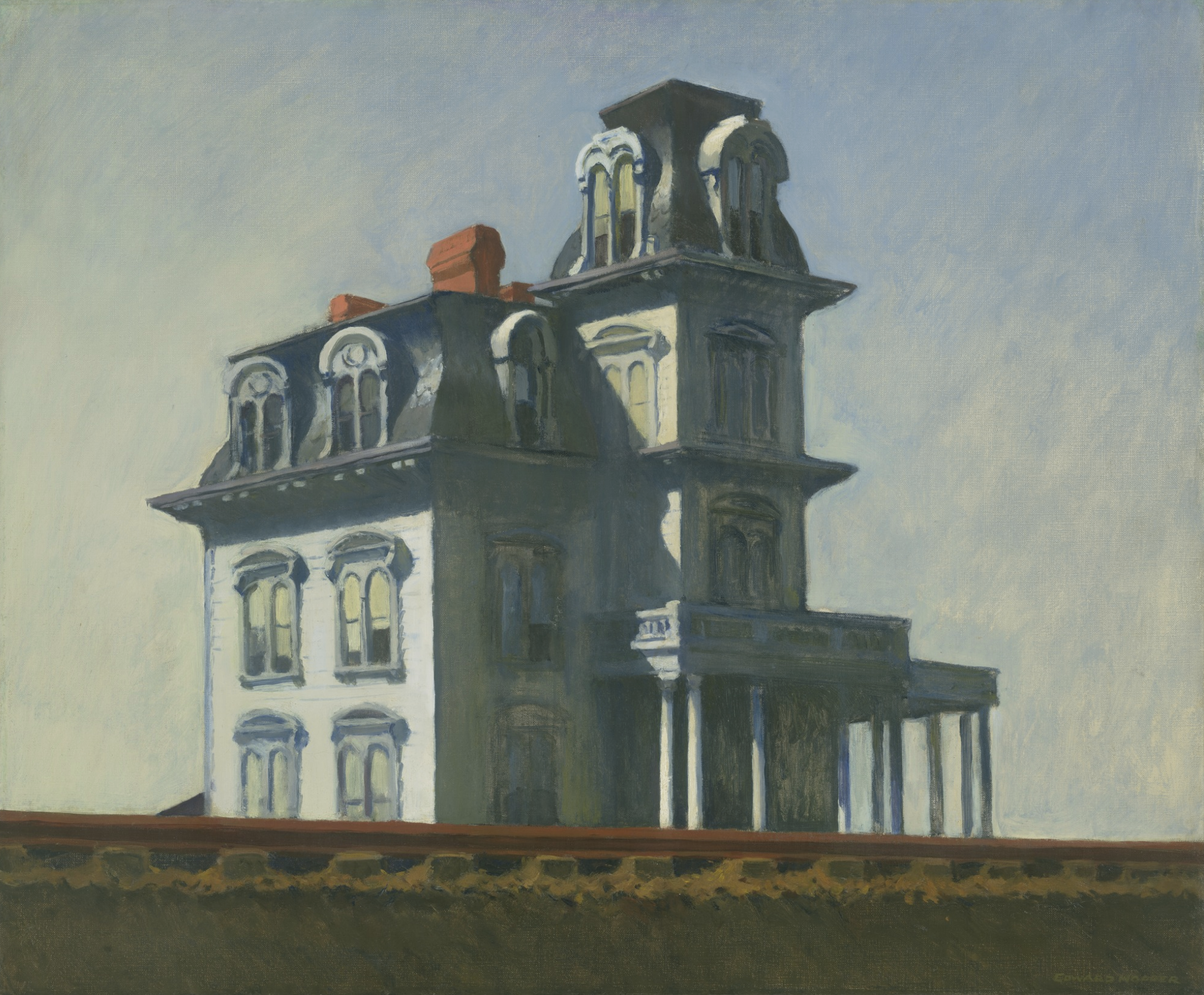PsychoBarn: A Lesson in Disorientation
I came up from Green Park tube, walked along Piccadilly, past the Ritz, the Wolseley and the Caffè Concerto, and turned into the Royal Academy.
There, in the neo-classical courtyard of this august building, sat a red family house with slatted wooden walls, gothic ornamentation, a tatty white porch and a steep mansard roof.
It stopped me in my tracks.
'Transitional Object (PsychoBarn)’ is a piece by the British artist, Cornelia Parker (at the Royal Academy until March 2019). It was first shown on the roof of the Metropolitan Museum of Art in New York in 2016. It was built using materials reclaimed from a typical American red barn. They have been carefully dismantled, then re-assembled in the form of the Bates family mansion from Alfred Hitchcock’s 1960 film ‘Psycho’. This in turn was itself a studio interpretation of an Edward Hopper painting, ‘House by the Railroad’ (1925). ‘PsychoBarn’ is smaller in scale than a normal house (just over 30 feet). And it is incomplete. At its rear it is supported by scaffolding, just like a stage-set.
The piece suggests a kind of ‘Little House on the Prairie’ romanticism, at the same time as concealed threat and inarticulate menace. Parker talks about confronting the 'polarities of good and evil'. It is a house built from a barn. It is not whole. It deceives. Its scale confuses. In an urban context its architecture disorientates. And being modeled on a film, which in turn was inspired by a painting, it carries layered meaning.
Parker borrowed the term 'transitional object' from developmental psychology. It was coined in 1951 by the analyst DW Winnicott to describe an item used to provide psychological comfort as a substitute for reality - typically a child’s comfort blanket or teddy bear.
‘PsychoBarn’ is like a comfort blanket in that it is real and unreal. It is initially attractive, simple, reassuring. But on closer inspection it is deceitful, ambiguous, complex.
‘I like the idea that you take things that perhaps seem clichéd. But they’re clichéd for a reason. They resonate with a huge amount of people…The inverse of the cliché is the most unknown place.’
Cornelia Parker
There’s a simple lesson that we could all learn here.
So often modern communication reflects and confirms the world as it is, or as we would want it to be. Our ideas are two-dimensional, flat and transparent. We pedal clichés rather than subverting them; reinforce stereotypes rather than challenging them. Consumption becomes easy, passive and comfortable. And at the same time bland, safe and forgettable.
If we really want to be remembered, we should endeavour to disorientate our viewers; to disarm and disturb them. We should consider changing the context, adjusting the scale, reconfiguring the materials, juxtaposing the incongruous, layering the meaning, subverting the message.
In the midst of the comforting and familiar, we should seek out ‘the most unknown place.’
Time for a festive break.
Next post will be on Thursday 3 January.
Have a restful Christmas.
See you on the other side, I hope.
'Christmas is here.
I know what I want this year.
Presents and toys are fine.
But I got bigger things in mind.
Santa can you swing more love? More peace?
Because that’s what everybody needs.’
Macy Gray, ’All I Want for Christmas'
No. 211


